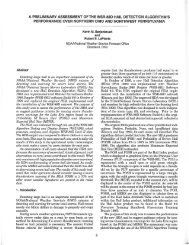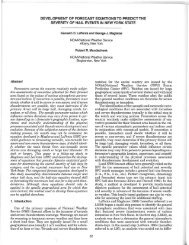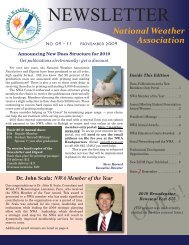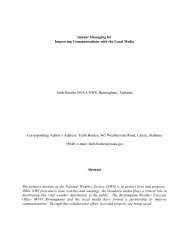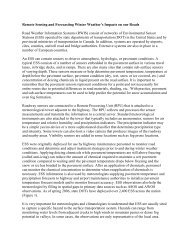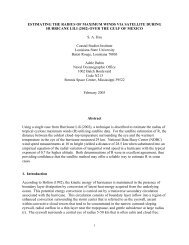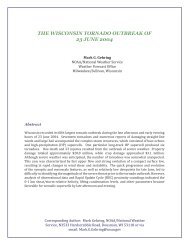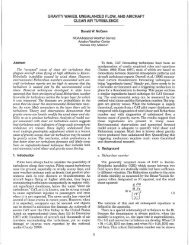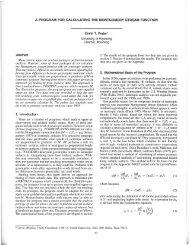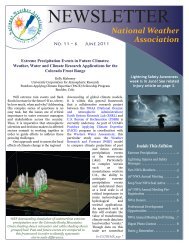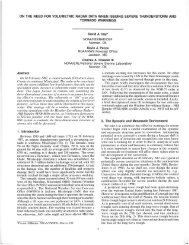Creating high-resolution hail datasets using social media and post ...
Creating high-resolution hail datasets using social media and post ...
Creating high-resolution hail datasets using social media and post ...
You also want an ePaper? Increase the reach of your titles
YUMPU automatically turns print PDFs into web optimized ePapers that Google loves.
verification efforts as resources in creating a <strong>high</strong>-<strong>resolution</strong> <strong>hail</strong> dataset from a notable <strong>hail</strong><br />
event that occurred across the Wichita, Kansas, metropolitan area on 15 September 2010.<br />
2. Hail data <strong>and</strong> methodology<br />
a. Case example: 15 September 2010<br />
On 15 September 2010, deep convection initiated over Reno County, Kansas, at<br />
approximately 2030 UTC. One long-lived supercell moved southeastward through portions of<br />
south-central Kansas over a 5-h period, impacting thous<strong>and</strong>s of residents, including a large<br />
portion of the Wichita metropolitan area (Fig. 2). Most notably, the supercell produced an<br />
expansive swath of significant <strong>hail</strong> (diameter ≥ 51 mm; ≥ 2.00 in.) across both urban <strong>and</strong> rural<br />
areas. Additionally, the storm produced five EF-0 tornadoes in Sedgwick <strong>and</strong> Cowley Counties.<br />
Figure 2. A time series composite of 0.5 o base reflectivity from the Wichita, Kansas (KICT),<br />
WSR-88D from 2112 UTC 15 September 2010 to 0030 UTC 16 September 2010.<br />
Residents identified a giant <strong>hail</strong>stone (hereafter referred to as the “Wichita stone”) in the<br />
western suburbs of Wichita that had a maximum diameter of 197 mm (7.75 in.). The State<br />
Climate Extremes Committee (SCEC) certified the Wichita stone as the new state record<br />
diameter <strong>hail</strong>stone, exceeding the previous record of 144 mm (5.67 in.) that occurred in<br />
Coffeyville, Kansas, on 3 September 1970 (Fig. 3). The individuals who retrieved the Wichita<br />
stone took diameter measurements within 30 minutes of occurrence. In diameter, the Wichita<br />
stone ranks as the second largest verifiable United States <strong>hail</strong>stone to date. Table 1 lists the<br />
“Top 5” verifiable <strong>hail</strong> stones, derived from <strong>hail</strong> reports with valid photographic evidence or<br />
34



